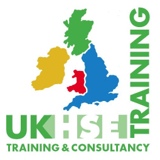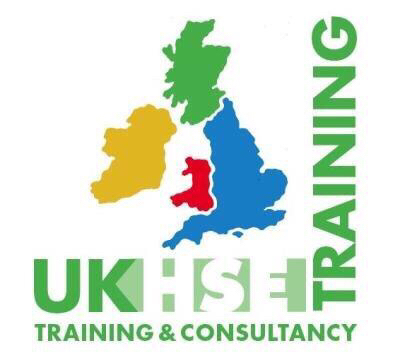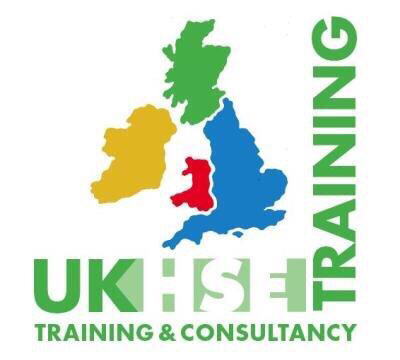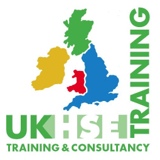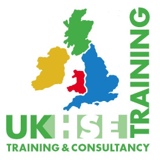Information
-
Audit Title
-
Document No.
-
Client / Site
-
Conducted on
-
Prepared by
-
Location
-
Personnel
0. Previous Audit Report
-
Has the previous audit report been closed out?
-
Have all previous issues been cleared?
1. Management Controls
-
Check that a signed copy of Form 10 has been sent to the local HSE office and that a copy is displayed on site (if applicable)?
-
Confirm if a health and safety plan is required for the project, if so indicate the date of the last review?
-
Check employers and public liability insurance certificates are valid and on display.
-
Are RAMS available for all activities in progress and briefed to operatives involved?
-
Have appropriate signs/notices been erected around the site i.e. mandatory use of PPE, Incomplete Scaffolds, No Smoking, Traffic Management, Fire assembly, Fist Aid Points etc.
-
Ensure adequate supervision is provided for all activities on the site paying particular attention to work activities as undertaken by young persons and/or those which are high risk activities.
-
Ensure all site operatives, including sub-contractors have a valid and appropriate CSCS/SKILL card.<br>
-
Induction training completed and records available to confirm this?
-
Management controls compliant?
2. Control of Substances Hazardous to Health (COSHH)
-
Have COSSH Assessments been carried out for all potentially hazardous materials and substances being used on the site.
-
Are material safety data sheets available to assist with COSHH assessments.
-
Have the hazards associated with the use of such materials been properly communicated to those affected.
-
Ensure all dangerous/hazardous materials/Substances are clearly marked/identified and stored in a secure location appropriate to the substance.
-
Have the appropriate control systems and PPE been provided and is the PPE being used.
-
COSHH Compliant?
3. Demolition Operations
-
Has a competent person been appointed to oversee the demolition operations?
-
Has the structural stability been checked and are temporary supports in place where required?
-
Are any temporary works designed required?
-
Has the temporary works register been completed (if applicable)?
-
Where required has the scaffolding been netted, monaflexed or hoarded off?
-
Have all services been disconnected?
-
Is the area barried off and suitably signs in place?
-
Is there adequate dust suppression where required?
-
Is there sutable noise controls in place?
-
Is there suitable lighting?
-
Is material being removed from site on a regular basis and not allowed to accumulate?
-
Are all demolition operatives adequately trained, supervised and instructed?
-
Demolition Operations compliant?
4. Electrical Equipment
-
Check that low voltage tools and equipment are being used wherever possible.
-
Check that only 110v CTE hand tool etc are in use.
-
Check all connections are properly made and suitable plugs are used.
-
Check that tools and equipment are visually checked and regularly inspected/tested by a competent person. (PAT)
-
Ensure that cables and trailing leads are not trip hazards.
-
Ensure that suitable and sufficient task lighting is provided to enable operatives to safely carry out their work.
-
Electrical Equipment compliant?
5. Excavations/Earthworks
-
Ensure that checks are made to determine the presence of any buried services before and during all excavation works.
-
All excavations should be carried out in accordance with a detailed method statement s and permit to dig. Is there a permit to dig?
-
Check that there is adequate support and propping for the excavation, or whether it has been sloped or battered back to a safe angle.
-
Check that there is a safe method used for placing supports, without the need for operatives to work in an unsupported trench.
-
Check that there is safe access into the excavation (i.e.: a sufficiently long and secured ladder).
-
Check that barriers or other protection to stop people/vehicles falling in are in place.
-
Does the excavation affect the stability of neighbouring structures or services.
-
Ensure that materials, spoil and plant is stored away from the edge of the excavation to reduce the chance of collapse.
-
Ensure that the excavation is regularly inspected by a competent person and that a record of such inspections is maintained.
-
Excavations/Earthwork compliant?
6. Fire Risks and Management
-
Confirm that an off site fire risk assessment is not required (timber-framed building)?<br>State reason why not produced project entails timber-framed structures.
-
Is there a fire risk assessment in place?
-
Ensure there are emergency procedures for evacuating the site in case of a fire, flood, explosion etc.
-
Ensure all staff know what these procedures are and that they form part of the site induction.
-
Check that there is an adequate means of raising the alarm, and that it is regularly tested.
-
Ensure that there are adequate escape routes and that these are kept clear of obstructions.
-
Ensure that the quantity of flammable materials, liquids and gases are kept to a minimum and are adequately stored.
-
Ensure that smoking and other ignition sources are banned in areas where gases or flammable liquids are stored or used.
-
Check that flammable and combustible waste is removed regularly and stored in suitable bins and skips.
-
Check that suitable fire extinguishers are provided and that they are maintained and in a good condition.
-
Check that all fire extinguishers have had an annual inspection.
-
Do all temporary coverings comply with LPS1207?
-
Fire Risk and Management compliant?
7. First Aid
-
Check the number of first aiders required, this is dependent on the type of work or operations, the number of workers on site and any special or unusual hazards, has an assessment been completed?
-
An appropriate number of trained and qualified first aiders should be available on the site. State names of first aiders.
-
Are the names of all first aiders detailed on the site notice board?
-
Ensure the first aid kit contains only first aid materials and is fully stocked?<br>
-
Is the location of the first aid box should indicated on the site notice board?
-
First Aid requirements compliant?
8. Housekeeping
-
Ensure all debris and waste is removed from the work area upon completion of the work or at the end of each shift.
-
Are pedestrian routes adequate, clearly signed and maintained free of debris?
-
Are vehicle routes adequate for their intended use and maintained in a fit condition?
-
Ensure Debris is not be allowed to collect around the site.
-
Ensure materials are stored in an appropriate manner so as not to cause damage to or a weakening of the material.
-
Are All hazardous/flammable liquids contained within a bundled area/tank?
-
Ensure all waste receptacles are are appropriately signed for their intended contents.
-
Housekeeping compliant?
9. Lifting Operations/Equipment
-
Ensure a (competent) Appointed Person co-ordinates all lifting operations.
-
Have all lifting operations got a valid lifting plan?
-
Ensure that all lifting equipment has been tested and installed by a competent person and is regularly maintained and inspected.
-
Check that the operators are trained and competent.
-
Check that the pre-use checks have been conducted for all lifting equipment (Telehandler, crane etc)?
-
Check that the rated capacity/safe working load is clearly marked.
-
Ensure that the lifting operation is conducted in a safe manner?
-
Ensure that cranes and other lifting equipment has sufficient space to operate safely.
-
All lifting equipment should have a thorough examination every 6 months.
-
Ensure lifting operations do not take place near overhead power lines and excavations.
-
Lifting Operations/Equipment compliant?
10. Low Level Access Including Steps, Podiums & Pico's
-
Are podiums and Pico's used before steps are allowed?
-
Are operators trained in the use of the equipment?
-
Id the equipment maintained and inspected regularly?
-
Items observed during the site tour are free from defect?
-
Are steps class 1 as defined in EN131?
-
Is there a risk assessment in place for the use of the equipment?
-
Low level access compliant?
11. Manual Handling
-
Ensure that a manual handling risk assessment has been completed wherever regular lifting of loads is required.
-
Check the suitability of using wheelbarrows, hoists, telehandlers and other plant or machinery so that manual handling of heavy objects is kept to a minimum.
-
Avoiding repetitive activities involving manual handling?
-
Ensure all staff have received manual handling training.
-
Manual Handling compliant?
12. Mobile Scaffold Towers
-
Check that proprietary tower scaffolds have been erected correctly and are being used in accordance with the suppliers instructions.
-
Check that the wheels of any tower scaffold have been locked when in use and check that the platform is empty when being moved.
-
Are they tagged safe for use?
-
Mobile Towers compliant?
13. Occupational Health, HAV'S, Noise and Associated Health Risks
-
Check that workers have had information and training so that they know what the risks are from HAV.
-
Check that exposure to HAV has been reduced as much as possible by selecting suitable work methods and Plant.
-
Ensure reduced-vibration tools are used wherever possible.
-
Check vibration tools are properly maintained.
-
Check whether health surveillance for people exposed to high levels of hand-arm vibration over long periods is in place.
-
Limit the exposure of persons to HAV by ensuring that no person uses vibrating tools for longer than the manufactures guided times.
-
Noise - As a general rule, if you: - have to shout to be heard at a distance of 2m, the noise level is approx 85dB and you should consider wearing hearing protection.
-
- have to shout to be heard at a distance of 1m, the noise level is approx 90dB and you should definitely wear hearing protection.
-
Ensure that workers have had training so they are aware of the risks from noise on site and what they need to do to avoid these risks.
-
Check whether the noise can be reduced by using different working methods or selecting quieter plant e.g.: by fitting breakers and other plant or machinery with silencers.
-
Preventative maintenance can also help to reduce the noise caused by wear and tear on plant and machinery.
-
Ensure that people not involved in the work are kept away from the source of the noise.
-
Occupation health, HAV'S, Noise and associated risks compliant?
14. Permits to Work
-
Hot Works - Hot Works include welding, oxy-acetylene cutting, use of angle grinders/skill saws etc.
-
Ensure all Hot Works Permits have been checked and reviewed and are valid for the work conditions.
-
Ensure suitable and sufficient fire prevention measures are in place, including the removal of all combustible materials, the use of fire blankets and fire extinguishers.
-
Ensure old permits have been cancelled and closed.
-
Dig - digging includes, excavations, knocking in pins, breaking ground etc.
-
Ensure permits to dig have been prepared and issued where the excavations are complex, hazardous or impact on the work or operations of another.
-
All permits to dig should be checked and reviewed prior to issue to ensure the appropriate controls have been included.
-
Ensure all contractors are working in accordance with permits to dig.
-
Ensure the permit is valid.
-
Check old permits have been cancelled and closed.
-
Permits compliant?
15. Personal Protective Equipment (PPE)
-
PPE General Requirements - Ensure PPE compatibility issues have been considered and that one piece of PPE not restrict the effectiveness of another piece of PPE.
-
Ensure that PPE is issued on an individual basis.
-
Ensure that it is compliant with both site and task requirements and is suitable for the type of work being undertaken.
-
Check that the PPE is marked with the genuine 'CE' mark to help identify type of protection.
-
Check that it is kept in good condition.
-
Ensure that persons are trained for the use of the RPE and where applicable have a face fit test to ensure the effectiveness of the RPE.
-
Ensure that all equipment is cleaned and checked after use.
-
PPE requirements compliant?
16. Plant & Equipment
-
Ensure that tools and equipments are being used and stored correctly to avoid damage to the equipment and persons.
-
Ensure operatives have been trained to use the tools/equipment they are using.
-
Check that guards are secure and in good repair.
-
Ensure all Plant and Machinery is inspected on a daily basis by the user and weekly by the manager?and recorded on the Plant Register.
-
Do all plant fitted with a semi-automatic hitch have safety pins fitted?
-
Are all plant operators trained and hold a valid plant operators card for the categories being operated?
-
Is Plant Used Correctly.
-
Plant and Equipment compliant?
17. Registers and Records
-
Check the site Inspection Registers for items such as scaffolding, excavations, cofferdams, plant and other equipment have been completed in a timely fashion.
-
Registers and Records compliant?
18. Scaffolding/Working platforms
-
Check that any scaffold erection, alteration or dismantling is carried out by a competent person.
-
Check that all standards are provided with base plates and timber sole boards which span at least two base plates.
-
Check that all standards, ledgers, braces and struts are in position.
-
Ensure that the scaffold is adequately tied to the building or structure to prevent collapse.
-
Check that double guard rails and toe boards or other suitable protection at every edge.
-
Check that there are additional brick guards provided to prevent materials falling from scaffold where they are used as a working platform.
-
Check that working platforms are fully boarded and that the boards are arranged to avoid tipping or tripping - i.e.: no overlapping boards.
-
Ensure that there are effective warning notices in place to stop any person using an incomplete scaffold.
-
Ensure that a competent person inspects the scaffold regularly, at least once a week; and always after it has been altered, damaged and following extreme weather.
-
Are scaffold tags being utilised?
-
Ensure that these inspections are adequately recorded.
-
Are all scaffolds and working platforms suitable for continued use?
19. Security
-
Are the public fenced off or otherwise protected from the work?
-
Is the appropriate warning signage displayed at the site perimeter?
-
Is the perimeter hoarding / fence secure and un-damaged?
-
Are all gates secured?
-
Are site security arrangements adequate?
20. Traffic Management
-
Has a traffic management plan been prepared, if required?
-
Are traffic management arrangement suitable and sufficient ?
-
Are pedestrians segregated from moving vehicles and plant?
-
Does the site layout match the plan?
-
Have one way or turning points been identified?
-
Are procedures in place for the unloading of vehicles to prevent fall from vehicles?
-
Are traffic management arrangement sutable?
21. Welfare Facilities
-
Ensure a facility is provided to change, dry and store clothing.
-
Mess facilities should include a place where workers can sit, make hot drinks and prepare food.
-
Mess facilities shall be of sufficient size for the number of employees on site and are provided with heating.
-
Ensure access to the welfare facilities are accessible to all persons on the site.
-
Ensure a supply of wholesome drinking water and cups are provided.
-
Ensure that all drinking water supplies are appropriately signed.
-
Ensure sufficient toilets are readily available, maintained, kept clean & are properly lit.
-
Note - A connection with mains drainage is always preferable to that of a chemical toilet.
-
Are toilets connected to the main sewer?
-
Ensure there are washbasins, hot and cold running water, soap and towels.<br>
-
Ensure that the washbasins are large enough to wash up to the elbow and are kept clean.<br>
-
Where the nature of the work demands it, showers shall be provided.
-
Are showers provided?
-
Are welfare facilities cleaned on a daily basis?
-
Are welfare facilities compliant?
22. Working at Height
-
Check whether the work can be undertaken without working at height.
-
Check that access equipment is erected by competent persons and checked before use.
-
Ensure safe access and egress have been provided to areas.
-
Roof Work
-
Ensure that edge protection is provided to stop people or materials falling.
-
Ensure that precautions have been taken to stop people falling through fragile materials when working on roofs, e.g.: by providing barriers, covers or working platforms.
-
Ensure roof ladders are used in accordance with best practice requirements.
-
Ensure that people are kept away from areas below the roof work.
-
Ladders - Ladders should be used at an angle of 1:4 (75 degrees).
-
Ensure that ladders are in good condition, are not split, warped or have damaged rungs etc.
-
Check whether ladders are suitable for the purpose - only for short term work or for gaining access to another area.
-
Check that ladders rest against a solid level surface and that this is not a fragile or insecure material.
-
Check that ladders are secured to prevent them slipping sideways or backwards.
-
Check that ladders rise a sufficient height above their landing place (approx. 1m or 5 rungs).
-
Safe landing platforms to be provided where a ladder rises to a height of 9m or more.
-
Are work at height operations in accordance with the W@H Regulations?
23. Environmental
-
Confirm that the Project Environmental Plan has been drafted?
-
Spill kits available near fuel and other sources where appropriate?
-
Aspects and impacts register available?
-
Licensed waste carrier in use, copy of license held and waste transfer notes retained?
24. Summary
25. Audit Risk Level
-
Risk rating for this Audit.
26. Corrective Actions
27. Sign off
-
I confirm I have had the contents of this inspection report explained to me.
-
Site Manager
-
Person conducting this inspection?
-
Inspection concluded at:
